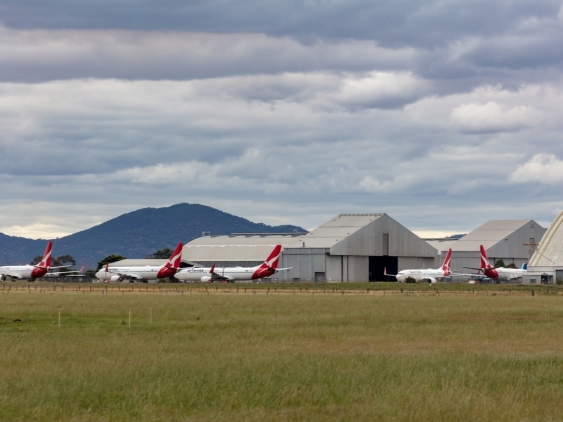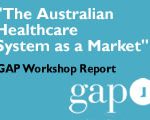Coronanomics

We are currently facing the biggest global public health pandemic since the Spanish flu outbreak of 1918 after World War I. With good reason, media interest has been focusing on the public health aspects of the crisis. But there is increasing concern about the economic consequences of the COVID-19 outbreak, as issues involved in fighting wars on both fronts become entwined.
The outbreak has been traced back to the wet markets in the Chinese industrial city of Wuhan, and has made its way to the rest of the world. It’s now a public health crisis first and foremost – but looking at the economic aspects of it, there are eight key learnings that Australia will have to keep in mind when the economy recovers:
1. It’s the end of globalisation as we know it
Trade brought prosperity to all corners of the globe, but COVID-19 has exposed the dark side of an interdependent world, along with a public health challenge than none of us has ever experienced. Globalisation will never be the same.
It’s not an outright rejection but rather a reset of globalisation. The difference between this crisis and the SARS medical event of 2002-04, the Global Financial Crisis (GFC) of 2007-09 or the North Atlantic financial crisis of 2008 – is that all major economies have been hit almost at once by the coronavirus outbreak, affecting global supply chains in manufacturing, people-based industries such as education and tourism, and other services-based exports.
There’s been disruption and nations will want to rebuild with a revitalised interest in economic self-sufficiency – especially in medical equipment and technology. The key takeaway is to never be reliant on imports in an emergency again. The fact that China dominates the global supply chains of medical equipment and is also the origin of the pandemic has proven to be very challenging for many countries trying to contain the outbreak amidst a shortage of medical supply.

Costco shoppers panic buying toilet paper in San Francisco, California. Photo: Shutterstock
2. The nation state is back
Despite talks of supranational governance, citizens are looking to their national governments to deal with the crisis. Nations as diverse as New Zealand, Singapore, Japan, Norway and Australia were quick to close their borders. In Australia, all states have closed their borders with the exception of New South Wales and Victoria.
Public ownership of key industries is also back on the agenda. We will see partial nationalisation in the airlines industry in the UK, Europe and Asia. The main carriers in the Middle East are already state-owned thanks to the deep pockets of their government owners. The same applies for ports and airports, though this might stop at bank nationalisation. In Australian terms, we are going to be seeing a bit more of the economic flavour of Ben Chifley and a little less Paul Keating.

Qantas aircraft grounded at Avalon Airport due to the COVID-19 outbreak. Photo: Shutterstock
3. The need to diversify foreign ownership
The days of fully mobile capital are gone; so are state-owned enterprises buying up distressed assets offshore. Treasurer Josh Frydenberg has announced sweeping new changes to Australia’s Foreign Investment Review Board (FIRB) guidelines – meaning that all foreign direct investment bids will be scrutinised with the threshold abolished.

Treasurer Josh Frydenberg, Chief Medical Officer Professor Brendan Murphy, Prime Minister Scott Morrison and Health Minister Greg Hunt arrive to speak at a press conference. Photo: Lukas Coch/AAP
At first, it was said that this would apply to free trade agreement (FTA) partners but this was later clarified to apply to all. Clearly, the Treasurer was not worried about a flurry of investment from Chile or Thailand and was instead aiming at Chinese state-owned enterprises looking to pick up distressed assets. Media photos of medical equipment being sent from Australia back to China on charter flights by Chinese owned companies didn’t help perceptions, either.
So, what’s the wash-up? Australia has relied on foreign investment since Governor Phillip brought convicts to its shores. But we have been a trading nation well before when the Indigenous people of Arnhem Land traded sea cucumber with the fishermen of Makassar – and that will continue. But Australia has to be careful to spread its foreign ownership so it’s not dominated by one country. The country has to act with caution when it comes to strategic assets and geopolitical risk.
4. Fiscal stimulus – go early, go households, go again and again?
During the GFC, Australian Treasury Secretary Dr Ken Henry was the mastermind of the “go early, go hard, go households” approach that enabled Australia to avoid recession. Now the federal government is looking at several stimulus packages targeting households, small businesses and selected industries adversely affected by COVID-19 such as the arts, sports, tourism and aviation. But this is different to the GFC. There was no social distancing or lockdown in 2008 – it was purely an economic crisis, not a public health paired with an economic crisis.
Whilst it is important to bolster the safety net and keep money in the economy, a big stimulus during lockdown when global supply chains are log-jammed, may not work. The federal government could choose to wait until a vaccine is found for the virus and then bring in a stimulus to help kickstart the recovery. The Reserve Bank of Australia, for its part, like most of the world’s central banks, has let interest rates fall to almost zero and bought back bonds to help put cash on in the economy.
5. Labour pains: Will a wage subsidy do the trick?
In a welcome move, the federal government has brought in a wage subsidy that allows workers to remain on the books (even if sent home) and eases the burden on employers by picking up part of the payroll tab. Countries like Denmark have implemented this with some success and it’s on the cards in the UK as well. This has helped ease anxiety in the labour market and allowed employers to keep their employees without bankrupting the company.
The wage subsidy scheme can also help in recovery as the employer can just put the worker back on and avoid the transactions costs of firing and re-hiring. The wage subsidy is a necessary although insufficient policy on its own in dealing with COVID-19. The constructive role played by the trade unions and the Minister for Industrial Relations has been a positive to come out of the crisis.
6. The tyranny of social distance
Australia’s great economic historian Geoffrey Blainey wrote The Tyranny of Distance to describe Australia’s place in the world, as well as the vast distances within our shores as well as beyond our shores. Now, half a century on, we have ‘the tyranny of social distance’ which prevents people from being in crowds and increasingly in smaller and smaller groups.
This may be temporary, but it has vast economic implications and may even change how we work in the post-coronavirus economy. Will we find we can work at home and have fewer staff meetings? Will the reductions in traffic congestion and carbon emissions give us some guide as to what may work in a future environment? The COVID-19 pandemic could provide a controlled experiment to how human beings adapt to change when we have to.
7. ‘Footynomics’ and the arts end of the world
The tyranny of distance has adversely affected anything involving crowds from our favourite sports to the arts and culture and even religion. It has revealed the economic value of sport, too. The AFL and NRL – Australia’s two major football codes in terms of commercial value – were very reluctant to postpone their respective seasons and it took a while for Japan to accept the inevitable and postpone the Tokyo Olympics to 2021. All sports and arts institutions will operate differently post-coronavirus. The rediscovery of outdoor pursuits (even simple ones like playing with your kids in the park) could transform sports and recreation after the crisis.
8. The post-war reconstruction of the 21stcentury
During World War II, the Curtin Chifley Labour government fought a war in the Pacific and possible invasion while setting up the nation for a post-war world of industrial development, full employment and mass immigration. This was known as post-war reconstruction – one of the biggest social and economic programs the nation has undergone in its history.
This made planners realise that some of the changes made could improve the economy post-war. For example, women working in munitions factories, the need for a larger population, a banking and financial system and a higher education system (the expansion of the universities) and research program through the Commonwealth Scientific and Industrial Research Organisation (CSIRO).
It could well be that whilst the nation and the world bring in temporary measures to deal with COVID-19, this could also be an opportunity to remake ourselves, develop new industries and new ways of working while dealing with work, education and family life.
Tim Harcourt is the J.W. Nevile Fellow in Economics at UNSW, Sydney and host of The Airport Economist TV show and The Airport Economist Podcast.















